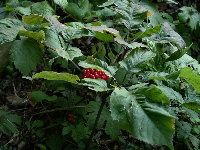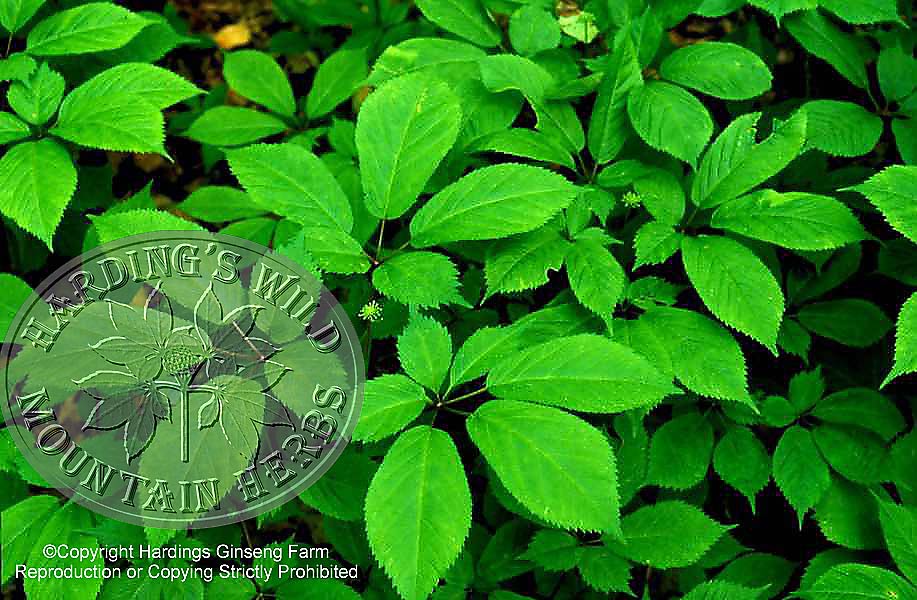Reproduction
Panax ginseng
and Panax quiquefolius
reproduce by seeds and asexual reproduction using rhizomes and
roots. There is very little genetic
variation within an individual population but between the
different populations that occur over the world each Ginseng
plant species is very different. Ginseng is a perennial meaning
that it grows in the spring and
 by October it sheds its leaves
preparing the roots for winter (3).
by October it sheds its leaves
preparing the roots for winter (3).
The
life cycle is classified as a diploid (2n) life cycle all the way
through. There is no alternation of generations where
gametophytes and sporophytes (separate plants for reproduction) exist. Instead seeds are released from
the parent plant, grow into a sprout and eventually in the 4th
year forms flowers and berries which are then released into the wild
for seed dispersal (19).
Photo By Eric Burkhart
Used with permission from
Hardings Ginseng Farm
In
wild Ginseng the stalk of the plant changes every year until the 5th
 spring. The shoot dies
every year in the fall and creates a death
scar similar to that of a Pine tree. The older the root the more
scarred and wrinkled the root becomes. The first year it grows, the
plant produces a solitary bud. The next year the plant grows slowly.
The 4th year flowers form and fruit is produced in the
fall. The birds eat the fruit with the seeds inside them and release
the seeds from their bodies. This spreads the seeds around
geographically (19).
spring. The shoot dies
every year in the fall and creates a death
scar similar to that of a Pine tree. The older the root the more
scarred and wrinkled the root becomes. The first year it grows, the
plant produces a solitary bud. The next year the plant grows slowly.
The 4th year flowers form and fruit is produced in the
fall. The birds eat the fruit with the seeds inside them and release
the seeds from their bodies. This spreads the seeds around
geographically (19).
Used with permission from
Hardings Ginseng Farm

This
is a picture of the Ginseng life cycle. The plant starts growing
from the seeds into a sprout which develops every year until its
fifth year when it is finally mature enough to produce berries. The
berries fall of the leaves and produce new Ginseng sprouts. The
number of prongs tells how old the plant is. By the time it has two
prongs it is two years old. When it has three prongs it is three
years old. When Ginseng is five years old the roots are fully mature
and are usually harvested at this time to use as herbal medicines (11)(12).


